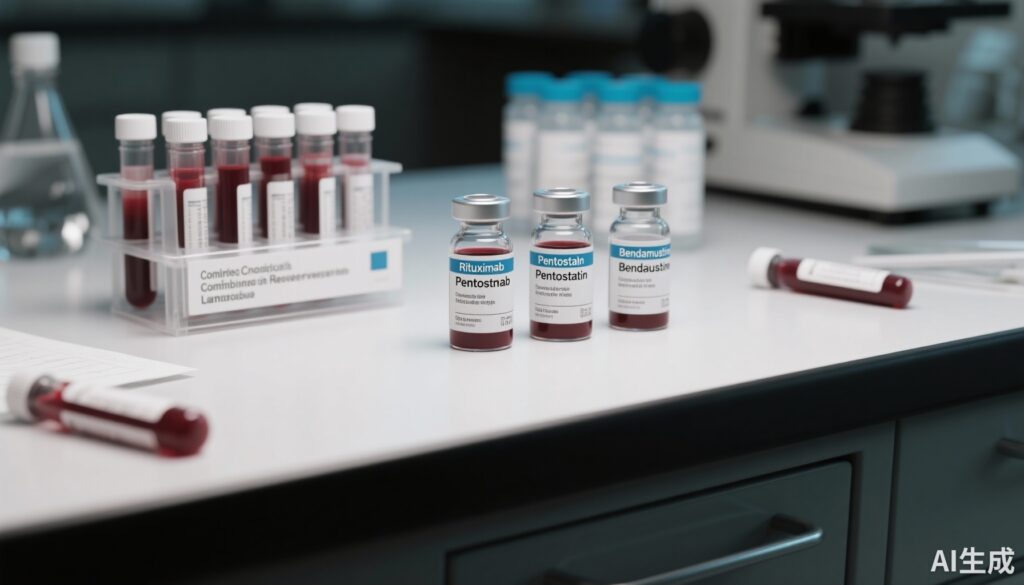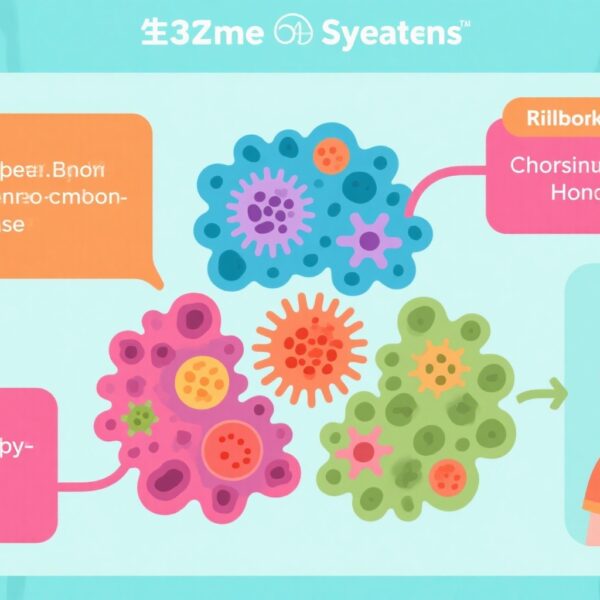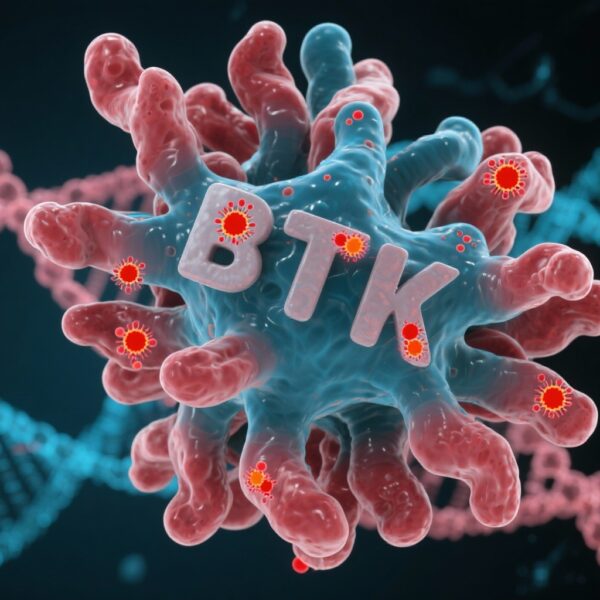Highlight
This phase 2 clinical trial evaluates the efficacy of rituximab in combination with either pentostatin or bendamustine in patients with multiply relapsed or refractory hairy cell leukemia (HCL) or variant HCLv, achieving overall response rates significantly higher than rituximab monotherapy. Both regimens demonstrate promising complete remission and progression-free survival outcomes, though baseline imbalances render direct superiority conclusions tentative. The findings suggest these combinations as potent therapeutic options for heavily pretreated HCL/HCLv patients.
Study Background and Disease Burden
Hairy cell leukemia (HCL) is a rare indolent B-cell lymphoproliferative disorder characterized by infiltration of the bone marrow and spleen, leading to cytopenias and immunosuppression. Although purine analogs such as pentostatin and cladribine have markedly improved outcomes, patients who experience multiple relapses or refractory disease pose a therapeutic challenge. Variant HCL (HCLv) is often more resistant to conventional therapies and carries a poorer prognosis. The standard of care for relapsed or refractory disease has included rituximab, an anti-CD20 monoclonal antibody, either alone or combined with purine analogs. However, the historical overall response rate (ORR) with rituximab monotherapy is approximately 40%, highlighting the need for more effective salvage regimens.
Bendamustine, a cytotoxic alkylating agent with purine analog-like properties, has demonstrated efficacy in B-cell malignancies and could offer an alternative in combination with rituximab. Until this trial, prospective data comparing rituximab with either pentostatin or bendamustine in multiply relapsed or refractory HCL/HCLv have been lacking.
Study Design
This phase 2 study enrolled 56 patients with multiply relapsed or refractory HCL or HCLv, defined as having documented progression after treatment with at least two purine analog regimens or one purine analog plus rituximab if initial response duration was under one year. Patients were randomized to receive six 28-day cycles of rituximab (375 mg/m² administered on days 1 and 15) combined with either pentostatin (4 mg/m² on days 1 and 15; DCFR arm) or bendamustine (90 mg/m² on days 1 and 2; BR arm).
The primary endpoint was overall response rate (ORR) with a goal to demonstrate a response exceeding 65%, which is significantly superior to the ~40% historical response rate of rituximab alone. Secondary endpoints included complete remission (CR) rates, minimal residual disease (MRD)-free CR rates, progression-free survival (PFS), and safety.
Key Findings
Baseline Characteristics: While patients were randomized, the DCFR arm had statistically fewer prior purine analog treatments (p=0.021) and lower baseline marrow infiltration by HCL/HCLv cells (p=0.013), factors associated with better outcomes.
Overall Response Rates: The ORR was 93% (95% CI 83-102%) for the DCFR arm and 86% (95% CI 73-99%) for the BR arm. Both rates significantly surpassed the primary objective of 65% (p<0.0001), underscoring the efficacy of these combinations over rituximab monotherapy.
Complete Remission and MRD Status: The DCFR arm showed numerically higher rates of CR and MRD-negative CR compared to the BR arm. Clearance of MRD is critical as it correlates with durable responses in HCL.
Progression-Free Survival: Median PFS was longer in the DCFR arm (141 months) compared to the BR arm (50 months), with a hazard ratio of 0.63 (95% CI 0.32-1.25). However, this difference was not statistically significant, possibly due to the imbalance in baseline prognostic factors.
Post Hoc Analyses: Subgroup analyses, particularly among classic HCL patients (n=41), suggested that any superiority of the DCFR regimen might be most evident in patients with more favorable disease characteristics, such as fewer prior treatments and lower marrow infiltration.
Safety: Both regimens were generally tolerable, though detailed safety data were not reported in the summary. Previous experience with pentostatin and bendamustine suggests manageable toxicity profiles, especially when combined with rituximab.
Expert Commentary
This trial adds valuable prospective data supporting rituximab combined with either pentostatin or bendamustine as highly effective regimens for multiply relapsed or refractory HCL/HCLv. The remarkably high ORRs contrast favorably with rituximab monotherapy and reinforce the role of chemoimmunotherapy in this niche but challenging patient population.
The numerical advantage of DCFR in CR rates, MRD negativity, and PFS is intriguing but should be interpreted cautiously given the baseline imbalances and the lack of statistical significance. These imbalances reflect real-world heterogeneity and highlight the difficulty in conducting randomized studies in rare diseases.
Future studies may focus on refining patient selection to optimize regimen choice and exploring the biological underpinnings that might preferentially favor purine analog-based combinations versus alkylator-based regimens like bendamustine. Additionally, integrating novel agents and MRD-guided treatment strategies could further improve outcomes.
Conclusion
In conclusion, the phase 2 trial demonstrates that rituximab combined with either pentostatin or bendamustine produces ORRs well above historical controls in multiply relapsed or refractory HCL and HCLv. While both regimens are effective, potential superiority of pentostatin-rituximab remains hypothesis-generating due to inherent baseline differences and requires validation. These findings support the use of chemoimmunotherapy combinations in heavily pretreated HCL and emphasize the ongoing need for personalized treatment approaches in this rare leukemia.
Funding and Clinical Trials Registry
This study was registered under ClinicalTrials.gov identifier NCT01059786. Details on funding sources were not provided in the summary.
References
Schroeder B, Yuan CM, Wang HW, Mohindroo C, Zhou H, Raffeld M, Xi L, Arons E, Feurtado JC, James-Echenique L, Calvo KR, Maric I, Kreitman RJ. Phase 2 trial of rituximab with either pentostatin or bendamustine for multiply relapsed or refractory hairy cell leukemia. Blood. 2025 Oct 8:blood.2025031243. doi: 10.1182/blood.2025031243. Epub ahead of print. PMID: 41060318.



